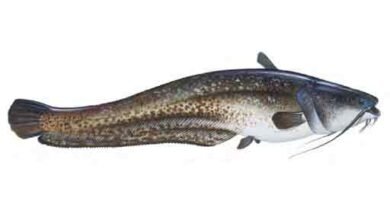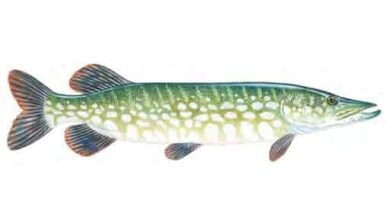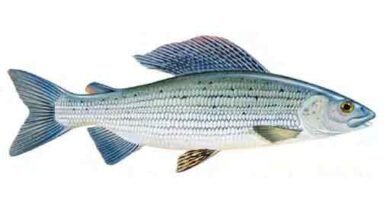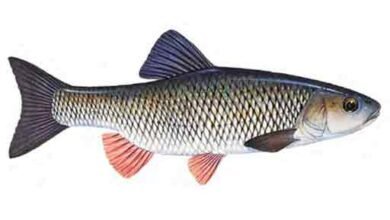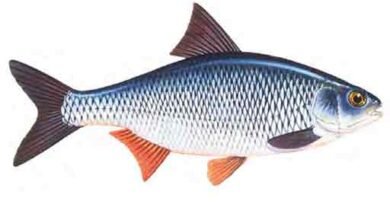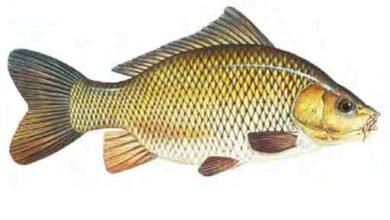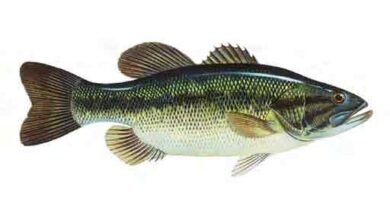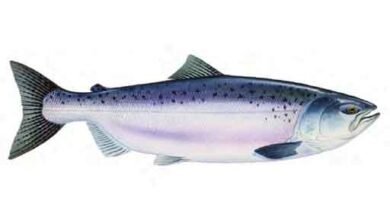Round Fish Species
Round fish Species swim in a vertical position and have eyes on both sides of their heads. Their bodies may be truly round, oval or compressed.
-

Wels Catfish
Although the giant wels catfish is native only to eastern and central Europe, it has been introduced into a far wider area, including much of western Europe and Asia. It is among the largest freshwater fish in the world and is considered an exciting sporting challenge. The river Ebro in Spain is one of the most famous places to fish for this big catfish. The wels catfish has a body with no scales, a broad, blunt head, and six distinctive barbels around the mouth. It is a voracious predator that…
-

Northern Pike
The northern pike is an extremely adept, streamlined predator. Its body is designed principally for intense bursts of high speed, while a long, flat snout, plenty of extremely sharp teeth, and complex jaws enable it to take relatively large prey fish and even small aquatic animals. This fish prefers a solitary existence, and it is a skilful and aggressive feeder, often using weeds for cover. It can also be cannibalistic, attacking smaller fish of its own species. It inhabits clear lakes, ponds, and rivers, and is considered a territorial fish.…
-

Grayling
The grayling is not a particularly large fish, growing to a maximum of about 60cm (2ft) in length, but they have a highly distinctive, large dorsal fin. It is gregarious, forming shoals, and prefers to live in well-oxygenated, running water. It is commonly found in rivers, and in North America, it can be found in lakes. It is particularly susceptible to pollution and thrives best in clean water, usually in the upper parts of a river with a gravel or sandy bottom. It feeds predominantly on a varied diet of…
-

Rudd
At first glance, the rudd looks very much like a roach (opposite), but there are two main differences: a rudd’s dorsal fin is set further back than that of a roach, and while a roach has red irises, a rudd’s are yellow to orange. This species is found mainly in relatively still waters, such as canals, ponds, and marshlands. It prefers thickly overgrown areas near to the banks. The rudd is happy to feed closer to the surface than the roach, but the diets of both species are similar, mainly…
-

European Chub
Sometimes in lakes. The European chub prefers medium- to fast-flowing clean water; it is also known to enter brackish water in the eastern Baltic. While young European chub form shoals, adults are solitary fish. Spawning is from April to June in sheltered waters.Adults of this species are powerful and opportunistic feeders, whose natural diet includes frogs, worms, smaller fish, crustaceans, insects, and seeds and berries that fall into the water from overhanging trees. They take a wide variety of baits; bread is particularly effective.
-

Roach
The roach is one of the most popular freshwater fishing quarries in Europe. This species has an upturned mouth, much like the rudd (opposite), that enables it at times to take food from the surface of the water.The roach inhabits mainly slow-moving rivers, canals, and well-vegetated still waters. Known for its ability to thrive in muddy or poor-quality water, the roach can also thrive in brackish inshore conditions, migrating up rivers from the sea in order to breed. It feeds primarily on insects, crustaceans molluscs, and plants – adult roach…
-

Common Carp
Common (or king) carp are an extremely popular fish throughout Europe and are becoming increasingly popular in other parts of the world. Part of the appeal of this species as a target for anglers is the fact that individuals can grow to very large sizes. In warm, food-rich waters, carp grow rapidly and can easily gain around 1 kg (2lb) per year. The common carp is a deep-bodied fish. It has no scales on the head, but its body is covered withthem. The varied diet of this species includes plants,…
-

Barbel Barbus barbus
Barbels in Angling The common barbel (Barbus barbus) remains one of the most sought-after species by anglers across Europe. This distinctive fish, characterized by its elongated body, bronze coloration, and the four signature barbels surrounding its mouth, has earned a devoted following among fishing enthusiasts. These sensory organs not only give the fish its name but serve a critical function in helping barbels locate food along riverbed substrates, particularly in low-visibility conditions. The common barbel thrives in what ecologists term the “barbel zone”—sections of rivers with moderate flow, good oxygenation, and gravel…
-

Largemouth Bass
A member of the black bass family, active and sometimes cannibalistic predators, the largemouth bass has an upper jaw that extends to behind its eye, hence the name. This species feeds predominantly on smaller fish, frogs, and crayfish, but does not feed during spawning. As the water warms up, so does its metabolism: the preferred temperatures for feeding are from 10 to 27°C (50 – 80°F); it feeds most heavily from 20 to 27°C (68 – 80°F). Like all species of black bass, the largemouth bass thrives in clear water…
-

Chinook Salmon
Chinook Salmon highly prized game fish are also known as king salmon. Chinook are the largest Pacific salmon and immensely hard-fighting, powerful fish. Like all salmon, they begin their lives in freshwater. Chinook salmon fry can migrate to sea when they are only three months old, but generally, they remain in the spawning rivers for one to three years before migrating to the oceans, where they feed and mature. These salmon can migrate huge distances at sea, then they return to the rivers they were born in, spawn once, and…
